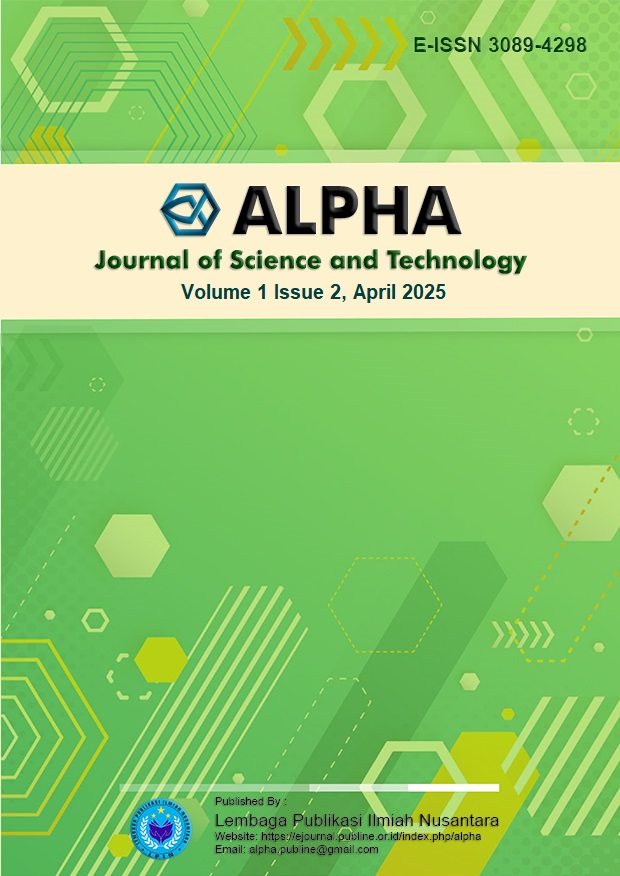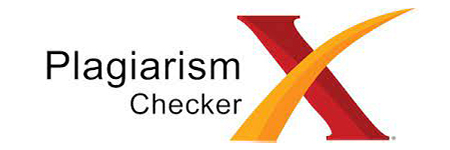Penerapan Asam Lemak Hidroksamat dalam Industri Farmasi dan Kosmetik
DOI:
https://doi.org/10.70716/alpha.v1i2.146Keywords:
fatty Hydroxamic acids, antimicrobial, anti-inflammatory, anticancer, cosmetics, pharmaceuticalsAbstract
This study aims to explore the application of hydroxamic fatty acids in the pharmaceutical and cosmetic industries, with a focus on their biological activities, product formulations, and compound stability in practical applications. Biological activity assays demonstrated that hydroxamic fatty acids exhibit significant antimicrobial effects against Escherichia coli and Staphylococcus aureus, as well as effective anti-inflammatory activity by reducing the production of pro-inflammatory cytokines in RAW 264.7 cells. Furthermore, anticancer tests on human breast cancer cells (MCF-7) showed that these compounds can inhibit cancer cell proliferation. In terms of product formulation, hydroxamic fatty acids were found to be stable in cosmetic products (facial serums and hair masks) and pharmaceutical products (topical ointments), with results indicating improvements in skin elasticity and hair quality, along with a reduction in inflammation symptoms in patients. However, a major challenge in the application of hydroxamic fatty acids lies in their complex synthesis process, which requires hazardous chemicals, thereby increasing production costs and impacting environmental sustainability. Therefore, further research is needed to develop more efficient and environmentally friendly synthesis methods. Overall, the findings of this study suggest that hydroxamic fatty acids hold significant potential for development as effective and safe active ingredients in the pharmaceutical and cosmetic industries.
Downloads
References
Arundhasree, R., Aiswarya, R., Kumar, A. R., Kumar, S., & Nair, S. (2021). Ufasomes: Unsaturated fatty acid based vesicular drug delivery system. Int. J. Appl. Pharm, 13(2), 76-83.
Biermann, U., Bornscheuer, U. T., Feussner, I., Meier, M. A., & Metzger, J. O. (2021). Fatty acids and their derivatives as renewable platform molecules for the chemical industry. Angewandte Chemie International Edition, 60(37), 20144-20165.
Hase, J., Kobashi, K., Kawaguchi, N., & Sakamoto, K. (1971). Antimicrobial activity of hydroxamic acids. Chemical and Pharmaceutical Bulletin, 19(2), 363-368.
Huang, L., & Pardee, A. B. (2000). Suberoylanilide hydroxamic acid as a potential therapeutic agent for human breast cancer treatment. Molecular medicine, 6, 849-866.
Khalili, L., Dehghan, G., Feizi, M. A. H., Sheibani, N., & Hamishekar, H. (2021). Development of an albumin decorated lipid-polymer hybrid nanoparticle for simultaneous delivery of methotrexate and conferone to cancer cells. International Journal of Pharmaceutics, 599, 120421.
Loftsson, T., Ilievska, B., Asgrimsdottir, G. M., Ormarsson, O. T., & Stefansson, E. (2016). Fatty acids from marine lipids: Biological activity, formulation and stability. Journal of Drug Delivery Science and Technology, 34, 71-75.
Muhsinun, M. (2025). Asam Lemak Hidroksamat: Sifat Kimia dan Aplikasinya dalam Bidang Bioteknologi. Journal of Science and Technology: Alpha, 1(1), 7–12. https://doi.org/10.70716/alpha.v1i1.93
Neganova, M. E., Klochkov, S. G., Aleksandrova, Y. R., & Aliev, G. (2021). The hydroxamic acids as potential anticancer and neuroprotective agents. Current Medicinal Chemistry, 28(39), 8139-8162.
Pérez, B., Dahlgaard, S. E., Bulsara, P., Rawlings, A. V., Jensen, M. M., Dong, M., ... & Guo, Z. (2017). Synthesis and characterization of O-acylated-ω-hydroxy fatty acids as skin-protecting barrier lipids. Journal of Colloid and Interface Science, 490, 137-146.
Pontiki, E., & Hadjipavlou-Litina, D. (2006). Antioxidant and anti-inflammatory activity of aryl-acetic and hydroxamic acids as novel lipoxygenase inhibitors. Medicinal Chemistry, 2(3), 251-264.
Shang, L., Li, M., Xu, A., & Zhuo, F. (2024). Recent applications and molecular mechanisms of hyaluronic acid in skin aging and wound healing. Medicine in Novel Technology and Devices, 23, 100320.
Taofiq, O., González-Paramás, A. M., Barreiro, M. F., & Ferreira, I. C. (2017). Hydroxycinnamic acids and their derivatives: Cosmeceutical significance, challenges and future perspectives, a review. Molecules, 22(2), 281.
Downloads
Published
How to Cite
Issue
Section
License
Copyright (c) 2025 Muhsinun, Emsal Yanuar

This work is licensed under a Creative Commons Attribution-ShareAlike 4.0 International License.











